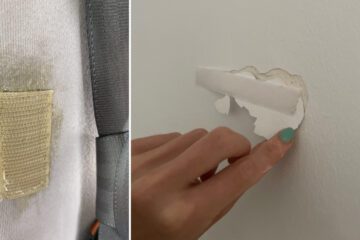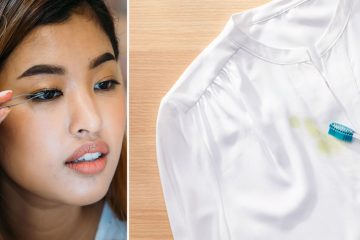Trying to glue polyvinyl chloride (PVC) to a wood surface? While bonding these very different materials presents some challenges, the results can be well worth the effort if done properly. This comprehensive guide covers various effective methods for how to glue pvc to wood successfully.

Key Takeaway:
- Select specialty adhesives engineered for plastic/wood bonds
- Properly prepare PVC and wood before gluing
- Apply a thin adhesive layer and clamp firmly during full cure time
- Allow adhesives to fully set over 16-72 hours before stressing joints
- Consider supplemental mechanical reinforcement for added durability
Why Gluing PVC to Wood is Tricky
PVC and wood have very distinct properties that make adhesive bonding difficult. Key issues include:
- Surface Incompatibility: PVC has an impermeable, non-porous surface that prevents penetration and mechanical bonding. Wood surfaces have texture and pores that adhesives can grip.
- Thermal Expansion Differences: PVC and wood expand and contract at considerably different rates as temperatures fluctuate. The bond needs to withstand this disparity over time.
- Moisture Absorption: Wood readily absorbs moisture while PVC resists water. The adhesive must bridge the materials’ inherent moisture differences.
- Rigidity Mismatches: PVC is moderately flexible yet still brittle. Wood has some flexibility but minimal elasticity before breaking. Vibration or shock can degrade rigid glue joints over time.
The rest of this guide offers solutions and best practices for managing these hurdles when gluing PVC to wood.
Choose the Best Adhesive for PVC and Wood Projects
Selecting an adhesive engineered to span the differences between non-porous plastics like PVC and porous materials such as wood is paramount. Consider these top options:
1. PVC Trim Adhesive
Waterproof adhesives explicitly made for gluing vinyl trim and panels to wood offer balanced flexibility, strength, and UV resistance for both indoor and outdoor applications:
- Titebond Ultimate PVC Trim Adhesive: Specifically formulated to bond PVC, metal, wood, foam, and more. Offers superior flexibility and resistance to extremes.
- Loctite PL Premium Polyurethane Construction Adhesive: Dense polyurethane formula bonds most building materials including finished woods and PVC. Weatherproof and water resistant.
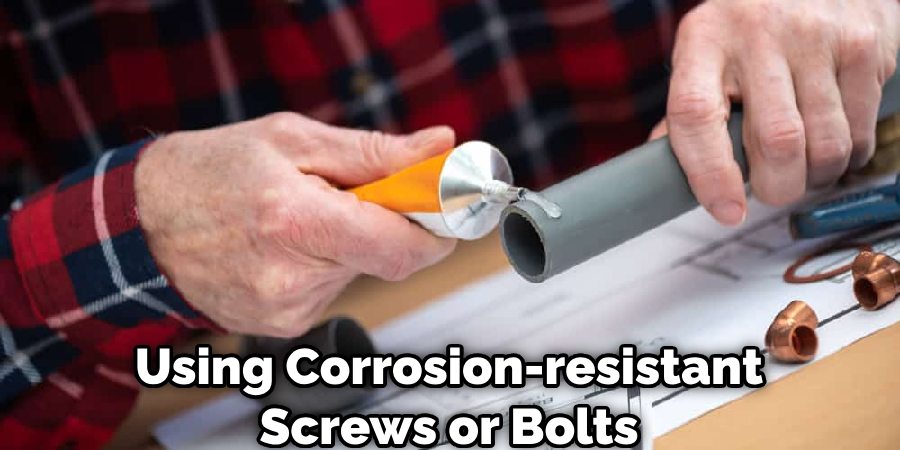
2. Epoxy Adhesives
Two-part epoxies offer extremely rigid and durable plastic-to-wood joints resistant to temperature fluctuations:
- Gorilla 2-Part Epoxy: A versatile and heavy-duty adhesive for multiple materials. Good gap-filling properties. Best for indoor use.
- Loctite EA Epoxy Heavy Duty: Dense formula with 5,000+ PSI bond strength. Bonds plastics, wood, concrete, metals, and more. Great for outdoor and marine applications.
3. Polyurethane Glues
Moisture and temperature-resistant one-part polyurethanes work well for certain PVC and wood assemblies:
- Gorilla Glue Polyurethane Glue: Expands substantially during cure which can reinforce less precise joints. Good for uneven surfaces. Use sparingly.
- Loctite PL Premium Polyurethane Construction Adhesive: All-around performer offers flexible bonds, weatherproof durability, and broad material versatility including PVC and wood.
For the best results over time, use adhesives specifically made for bonding dissimilar materials like plastics and wood.
You Can Check It Out to Open Gorilla Wood Glue.
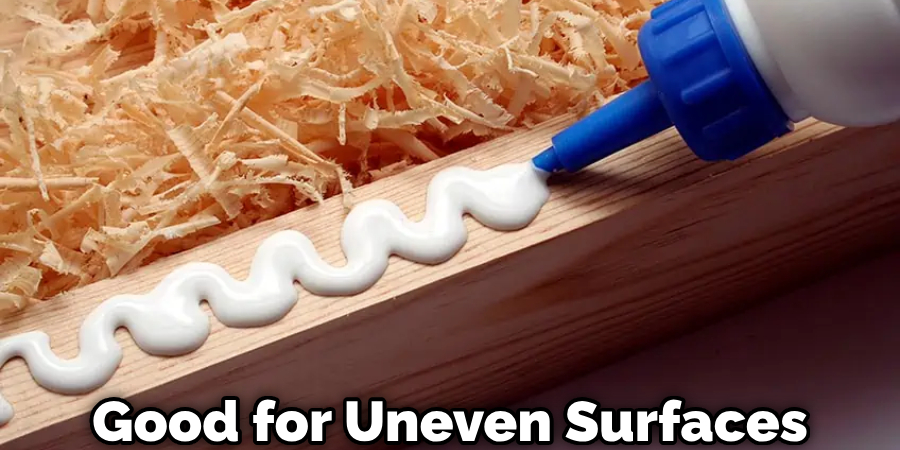
3 Easy Steps for How to Glue PVC to Wood
Here are the 3 easiest steps to follow for how to glue PVC to wood:
Step 1: Prepare the PVC and Wood Surfaces
Proper preparation is essential before attempting to glue PVC to wood. Follow these key steps:
- Lightly Sand PVC: Use 150-220 grit sandpaper to scuff the bonding surface to provide microscopic crevices for adhesive grip.
- Clean Surfaces: Wipe away any PVC plastic or wood dust using 70% isopropyl alcohol on a lint-free rag. Remove existing oils or residue with a degreaser or mineral spirits followed by a rinse. Ensure 100% dryness.
- Dry Fit Parts: Do a trial assembly before gluing to check fit alignment between PVC components and wood. Make any necessary adjustments before adhesive application.
Take the time to prepare all bonding surfaces for best glue joint durability thoroughly.
Step 2: Apply Chosen Adhesive to PVC and Wood
With precise adhesive application, even a thin glue line can create very sturdy PVC-to-wood bonds:
- Place adhesive in a workable makeshift container for easier access with a foam brush or plastic spreader. Avoid direct contact between application tools and original tubes or cans to prevent cross-contamination.
- Apply a thin 1/8” layer evenly across the entirety of the PVC and wood bonding areas per manufacturer instructions, using less rather than more. Too much squeeze-out indicates excess that can compromise strength.
- For optimal tackiness, allow the adhesive layer to become slightly sticky to the touch before mating PVC and wood surfaces. Avoid premature drying.
- Two-part epoxies must be thoroughly blended at accurate mix ratios and then used within working time limits after combining components.
Ensure full adhesive coverage across all designated PVC and wood bonding zones for reliable lasting traction.
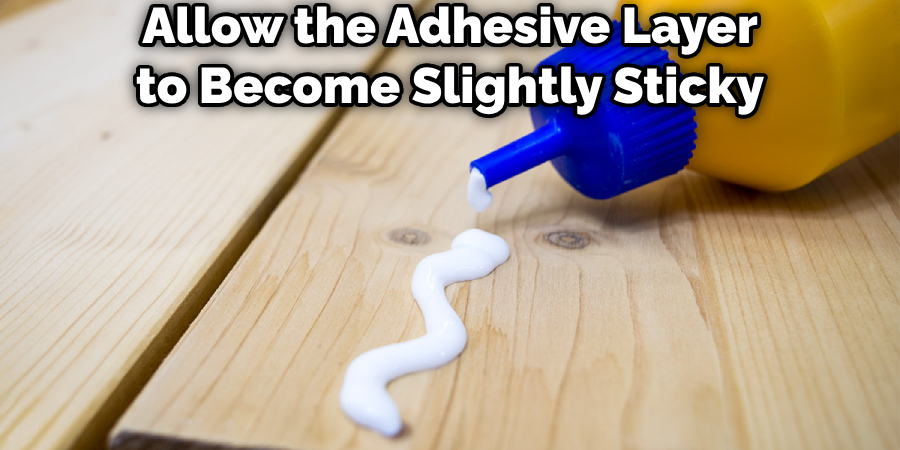
Step 3: Clamp and Allow Proper Curing Time
With the adhesive applied, firmly secure PVC and wood in the properly aligned position using clamps, straps, or compression:
- Position alignment guides, support blocks, or shims before clamping to help prevent movement or slippage after initial contact.
- Ratchet straps, bar clamps, or weighted boards can apply effective compression across the entire PVC and wood glue joint for full cure time.
- Do not reposition or adjust bonded components until the adhesive has initially been set according to specifications to avoid weak points from shear stress.
Allow the PVC adhesive to fully cure for the manufacturer’s recommended period before removing clamps or exposing them to service stresses and conditions for maximum strength. Most effective PVC to wood glues take 16-24 hours for an initial working set and may take 48-72 hours to finalize the curing process before exposing to loads or immersion.
You Can Check It Out to Remove PVC Glue From Hands.
Advanced Tips for Specific PVC Materials
Certain types of PVC require additional preparations or specialty adhesive selection for trouble-free bonding with wood:
- Foamed PVC: Lightly abrade foam PVC’s outer skin layers before adhesive application then use flexible gap-filling glues like PL Premium Polyurethane or Premium Elastomeric Sealant to allow for compression or contraction.
- Rigid PVC: For bonding edges or sheets apply flexible PL Polyurethane sealant/adhesive to compensate for thermal expansion differences then clamp securely using strapping or mechanical fasteners.
For challenging glue joints consider supplementary mechanical reinforcement using corrosion-resistant screws or bolts with oversized holes for movement allowance – understanding many PVC trim applications may intend concealed fastening only.
You Can Check It Out to Glue PVC Pipe Without Primer.

FAQs About How to Glue PVC to Wood
What is the Best Glue for PVC to Wood?
When gluing PVC to wood, consider using polyurethane glue, epoxy resin, or solvent-based PVC adhesive for a strong bond. It’s important to ensure that the surfaces are clean before applying the adhesive and to follow the manufacturer’s instructions for the best results. Additionally, clamping or applying pressure to the bonded materials during the curing process can help ensure a secure bond. Always prioritize safety by reading and following the safety precautions provided by the adhesive manufacturer.
Does Gorilla Glue Work on PVC to Wood?
Gorilla Glue is a versatile adhesive known for its strength and ability to bond various materials, including wood and PVC. Users have reported successful bonding of PVC to wood using Gorilla Glue, with some recommending the use of Gorilla Glue Gel for thin applications. However, it is important to follow the manufacturer’s instructions carefully and consider the potential messiness of the expanding glue during application. Additionally, users have suggested alternatives such as epoxy and specific commercial contact types of cement for similar applications. Always consider the specific requirements and conditions of the project when choosing the adhesive for bonding PVC to wood.
What Glue Will Stick Plastic to Wood?
When gluing PVC to wood, consider using polyurethane glue, epoxy resin, or solvent-based PVC adhesive for a strong bond. It’s important to ensure that the surfaces are clean before applying the adhesive and to follow the manufacturer’s instructions for the best results. Additionally, clamping or applying pressure to the bonded materials during the curing process can help ensure a secure bond. Always prioritize safety by reading and following the safety precautions provided by the adhesive manufacturer.
Can You Use Liquid Nails on PVC?
Gorilla Glue is a versatile adhesive known for its strength and ability to bond various materials, including wood and PVC. Users have reported successful bonding of PVC to wood using Gorilla Glue, with some recommending the use of Gorilla Glue Gel for thin applications. However, it is important to follow the manufacturer’s instructions carefully and consider the potential messiness of the expanding glue during application. Additionally, users have suggested alternatives such as epoxy and specific commercial contact types of cement for similar applications. Always consider the specific requirements and conditions of the project when choosing the adhesive for bonding PVC to wood.
You Can Check It Out the PVC Glue Calculator.
Conclusion: Gluing PVC to Wood Takes Patience
While bonding plastic PVC components to wood involves navigating some definite challenges, employing the right adhesive formulas combined with methodical surface prep and workmanship delivers lasting, high-performance composite assemblies across many residential and commercial applications.
Let the full adhesive cure time pass before exposing it to service loads or conditions for optimum results. And take necessary steps to sustain sufficient bond line flexibility based on environmental fluctuation expectations. With extra care taken, even dissimilar materials like PVC and wood can be affixed together for beautiful, sturdy, and water-resistant finished products.
